As an Amazon Associate I earn from qualifying purchases.
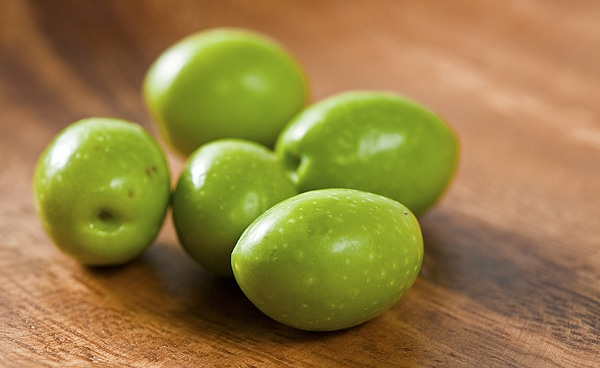
Lye. Isn’t that the stuff the Mafia uses to dissolve the bodies of those who’d made an unfortunate choice to use another waste disposal or vending machine company? Isn’t it drain cleaner, a deadly poison? So how on God’s Green Acre can lye be useful in the kitchen?
Relax. I am here to tell you that lye can be your friend, especially when it comes to curing green olives. A good lye cured olive, I have discovered, is uniquely smooth and luscious in a way that brine or water-cured olives can never be. Done right, they can be <gasp!> even better than a brine-cured olive. Seriously.
Let me start by admitting that I was as terrified about using drain cleaner to cure olives as you are. Intellectually I knew it would work, and knew I’d eaten lye-cured olives before, as have most of us: They are those nasty black canned things also known as Lindsay olives. That knowledge, however, did not bolster my desire to do any lye curing anytime soon.
Note: If you are looking for those instructions on how to brine-cure or water-cure olives, click here. I’ve settled on a process I am happy with, and which gives me great results. Brine curing is easy, and I am doing it again this year — but it takes many months. Water curing takes about a month, and the resulting olives are good, but not fabulous. So this year, when my friend Elise said a neighbor had olives he wanted us to pick, I decided to do the lye cure.

Before we headed out, I did some research. Actually, I did a lot of research. I’d seen all sorts of references to how the lye cure — actually a cure in water that had percolated through wood ashes, which are a source of lye — being used “since Roman times.”
OK, show me the proof. Many hours of searching later, I couldn’t get any closer than a generic “Romans.” Grrrr… Then a colleague on a food history-uber geek listserv I belong to saved the day. Apparently the Roman agricultural writer Rutilius Taurus Aemilianus Palladius is the source of this, in his De Re Rustica, written in the 300s.
“Mix together a setier of passum, two handfuls of well-sifted cinders, a trickle of old wine and some cypress leaves. Pile all the olives in this mixture, saturate them with this paste in garnishing them with several layers, until you see it reach the edges of the containers.”
Passum is freshly extracted grape juice, so the lye in the ash-water interacting with this would make an interesting brew. There would be so much sugar going on in there that you could get both a lye cure and fermentation going at the same time. Freaky. Might have to try that next year…
Since then the Spanish have been masters of the lye cure. Most Spanish table olives are cured at least in part with lye, but their process is far different than that used in to make the hideous Lindsay olive. I am modifying a method I found in an agricultural book written in 1817.
Incidentally, other popular modern olives that use a lye cure include the French Lucques, Italian Cerignola and Spanish manzanilla.
First thing you need to know about curing olives with lye is that you must use fresh green olives. Not black ones, not half-ripe ones. The lye process softens the meat of the olive, so you want it as hard as possible (Insert “that’s what she said” joke here).
Lemme tell you, the quality of the olives Elise and I picked was the best I’ve ever seen. Normally I pick in public parks, which in our hot Sacramento summers can skimp on watering, stressing the trees. Stressed trees mean the olives will be more susceptible to that scourge of olivedom, the olive fly. The larva of this nasty little bug burrows into an olive and eats it from within. Thankfully infested olives are easy to spot: They will ripen faster than healthy olives, and there is a tell-tale scar on the olive that looks like this:

Toss that olive. While the worm is not poisonous, I prefer my olives sans extra protein, thank you.
Green olives in hand, I headed out to the hardware store in search of lye. The traditional brand to use is the classic Red Devil Lye, which is an old brand of drain cleaner. But all the science I’ve seen says anything that is 100 percent sodium hydroxide works, so scan your drain cleaner well to make sure it is nothing but lye — Drano used to be this way, but apparently has additives now. Don’t use it.
But Hank, shouldn’t you use “food grade” lye? Well, after much research, I can find no hard evidence — none — that says there is any difference between so-called “food grade” lye and non-food grade lye. So, you can order the food grade stuff through that link above, or go to the hardware store and use a 100 percent sodium hydroxide drain cleaner. I’ve used both.
Isn’t lye a deadly poison? Sorta. Sodium hydroxide is one of the nastiest bases we know of; a base is the opposite of an acid. On the PH scale, distilled water is the median, at 7. Your stomach acid’s PH is about 1 1/2 — enough to burn a hole through a rug. Lye’s PH is 13.
Bottom line: Raw, pure lye will burn the hell out of you, but it is not a systemic poison. That means that even if you eat an olive that still has a lot of lye in it — as I did — all you will taste is a nasty soapy flavor. If you eat a bunch of them, the alkaline PH in the olives will counteract your stomach acid and it might give you indigestion. That’s all, and that’s a worst-case scenario. That said, you need to be damn careful at that one moment you are moving raw, pure lye from the container to the crock you are curing into.
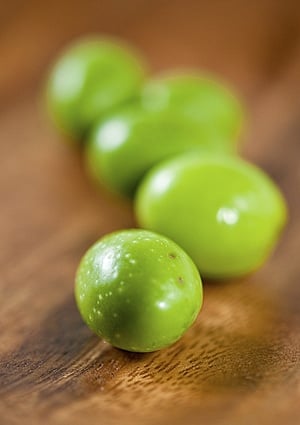
LYE CURING STEP BY STEP
Follow these instructions and you will be fine:
- Wear glasses if you have them. Wear long sleeves and pants and closed shoes. You will probably not get lye on you, but better to be safe.
- Pour 1 gallon of cold — not tepid, not hot, but cold — water into a stoneware crock, a glass container, a stainless steel pot, or a food-grade plastic pail. Under no circumstances should you use aluminum, which will react with the lye and make your olives poisonous.
- Using a measuring device that is not aluminum, add 3 tablespoons of lye to the water. Always add lye to water, not water to lye. A splash of unmixed lye can burn you. Stir well with a wooden spoon.
You’re done. You use cold water because the reaction between lye and water generates heat, and the hotter the lye-water solution, the softer the olives will become. Now that it is mixed, the lye solution can’t really hurt you, so go ahead and add your olives.
Stir them in with that wooden spoon and put something over all the olives so they do not float. This is vital. Olives exposed to air while curing turn black. Don’t worry, they will absorb the water and sink in a few hours, but to start you need to submerge them.
Let this sit at room temperature for 12 hours. The alkaline solution will be seeping into the olives, breaking the bonds of the bitter oleuropein molecules, which then exit the olive and go into the water. After 12 hours, pour off the solution into the sink. It should be pretty dark in color.
Quickly resubmerge your olives in cold water. You want to minimize the exposure to air. You now have cured olives. I know, I know, a lot of recipes say to repeat the lye process another time — sometimes three more times — but that will destroy a lot of flavor; there are a ton of water-soluble flavor compounds in an olive that the lye solution washes away. Trust me. Your olives, unless they are gigantic, will not be overly bitter even after just a light, 12-hour lye soak.
Now you need to cleanse your olives. They will have a fair bit of lye solution in them now. Keep changing the water 2-4 times a day for 3-6 days, depending on the size of the olives. After 2 days, taste one: It should be a little soapy, but not too bitter. It’ll be bland, and a little soft. Once the water runs clear you should lose that soapy taste.
Time to brine. If you have large olives, make a brine of 3/4 cup salt to 1 gallon of water. And use good salt if you can. You will taste the difference. Kosher salt is OK, but ideally use a quality salt like Trapani, which is from Sicily. It’s not that expensive, but it is worlds better than regular salt.
Let the olives brine in this for 1 week. Keep them submerged, or you will get darkening. After a while they will sink. After 1 week, pour off the brine and make a new one, only this time, use 1 cup of salt per gallon.
Now you can play. The traditional Spanish cure would add some vinegar to the mix, as well as bay leaf and other spices. I’ve played with adding a touch of smoked salt, chiles, black pepper, coriander, mustard seed, garlic — think Mediterranean flavors.
But before you do this, taste your freshly brined olives. It will be a revelation. They will remain beautifully green, unlike brined olives. Salty, olive-y and very, very buttery. This is the Lay’s Potato Chips of olives. I dare you to eat just one.
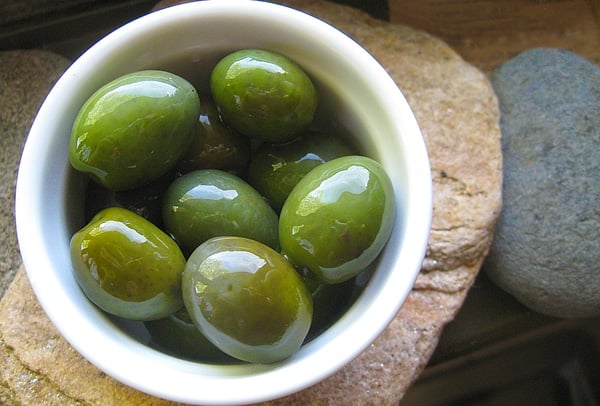
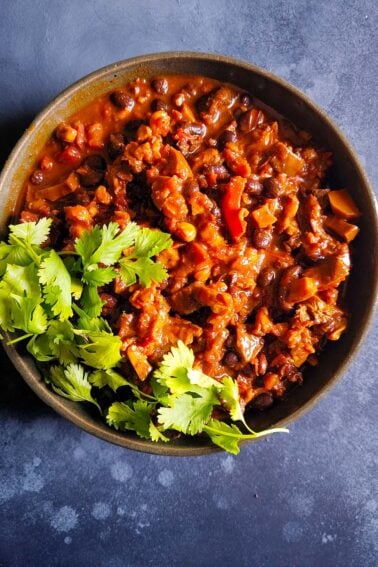
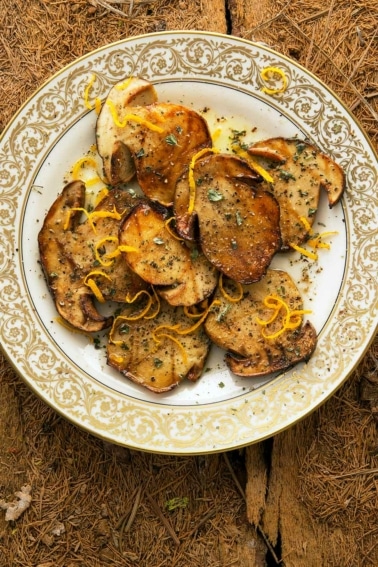
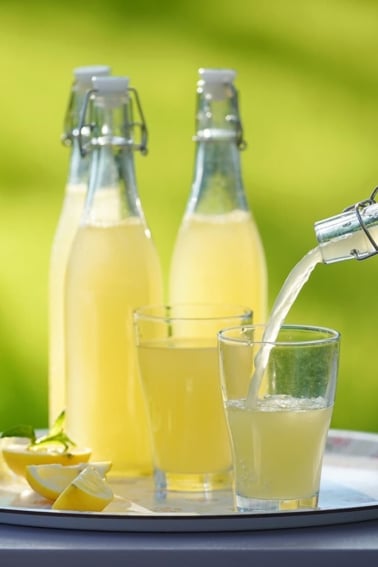
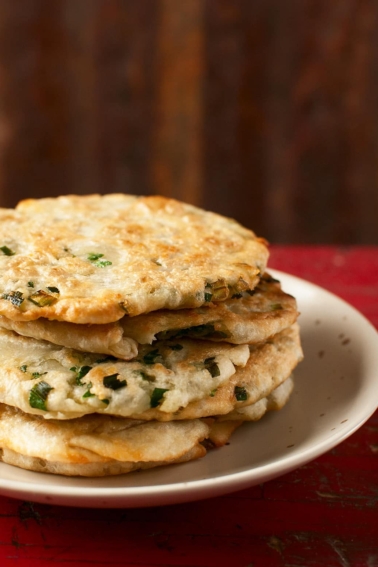
Hi Hank,
Really excited about this. I bought a pound of raw olives from the farmer’s market and followed the instructions to a T. After the lye bath and 4 days of changing the water 3-4 times a day, the olive (Sevilliano) I tried was still crazy bitter. So I gave it another lye bath, repeated the water baths, and am now in a brine.
Here’s a tip I discovered. I’m using a glass mason jar that holds about 8 cups of liquid. I’ve found that a pint glass does a great job of keep olives submerged.
I’m actually in Grass Valley now, and headed back through Sacramento on my way to SF. Are there still olives on the trees now? Where should I look (or is that a family secret of something)? Also curious about closing the jar during the first brine. I’m leaving mine open since the olives have all sunk.
Thanks for the great post,
Seth
Thanks, Hank!
Do you close the jar completely with first brine, too? I’m wondering if it needs air..
What’s the minimum amount of time you do the final brine for? 2-3 months?
Carey: I close the jar completely once you have the final brine. I store it in the fridge, too. The olives should last 6-9 months in the fridge that way.
Hi Hank-
I just finished a week of rinsing the lye solution from my first batch of olives. Now they’re sitting in a salt brine. I’ll do the salt brine for a week, and then swap it out and add some thyme and garlic, etc. to the brine. Do I close the jar completely, or does it need air? How long should they brine in the final solution with the garlic, etc.?
Sincerely excited to taste the final result!
-Carey
Hank, great recipe, I rushed the batch by not following your brining advice but the flavor is great. Mr Freddy
Thanks alot, Ive had great success with our olives, we have 200ish trees on our property and have just finished curing my first batch and then I have put them in our own olive oil with a garlic clove, fantastic, how long will they last like that for?
Do you have a great easy way to do black olives?
Thanks again
Martinborough New Zealand
Have been lye curing my green olives for some years and totally agree that 12 hours is enough, rather have a hint of bitterness than run the risk of destroying all flavours. Also totally agree that lye curing makes terrific quality olives, every year my friends and family want them as they recon they are the best they have ever had. I think your instructions are excellent but I do suggest weight for the hydroxide rather than bulk measurment as it can come in flakes or grains which have different bulk density. I use 150gms to 10 litres.
Melbourne Australia
Hi Hank:
I have a recipe that calls for 3 tablespoons of lye per gallon of water and a soak time of 8 hours. I did one batch of olives (+-10 pounds, medium size, in 2 gallons of solution) and they came out “perfect”. The next batch was a somewhat larger batch (more weight) and I again used 2 gallons of water. The olives were completely covered. Again for 8 hours. After rinsing for a few days I tasted them to find they were still somewhat bitter. Two questions:
1- Is there a solution/olives ratio or do the olives simply need to be totally submerged??
2- Is there a way to know, before dumping the lye solution, that the olives have been adequately treated by the lye??
On my second batch, did another soak using the same strength solution for 4 hours and they are perfect. Just looking for some means to eliminate more of the “guess work”. BTW, I was told when I purchased the lye, specifically for this purpose, “use this one because it is labeled 100% LYE”.
Thank you.
Thank for easing my mind a little about the lye. I almost decided to skip the lye method and do the brine method (even if that means I have to wait three times longer before I can enjoy one) just to avoid doing something I’m nervous about. Your post is very informative and helps first-time-olive-curers such as myself feel a little more confident about this whole olive curing thing that everything will be ok. Thank you.
Fascinating post. Experimenting with trying to grow some hardy types in Oregon, will see what happens in a few years…
I was wondering about quantity of olives in your lye-cure recipe. Unless I missed it somewhere, there didn’t seem to be a recommendation for how many pounds of olives can be processed in the gallon of lye bath. Thanks.
As one who has been curing, eating olives for 25 years, something I do to cut down on my exposure to lye is to use PHEROLPHTHE 1% in 200 proof alcohol to test for lye. What this does is when you make a cut or slice off one side down to the pit, apply a drop and it will react to the lye by turning a bright pink, so you can tell how far the lye has cut or if every trace of lye is rinsed out. I always do 60 to 100 gallons so this is a big help as I do many different varities an at different stages and the lye cuts at different rates. My Dad is 82 and still going strong and he has been at this for at least 50 years. So………we. have been injesting lye cured olives for that long at least and no ill effects, no ill effects, no ill !! Seriously I make that many because my friends constantly stop by with containers. The drops are available at your pharmacy. They might have to make it up for you.
Dan
Hi Hank, I found your post through Sarah, the woman who eats olives 2 weeks after curing them. I do too, actually. You crack the olives, soak them in water for a week while changing the water every day, and then soak them in brine for a week or two — and then they’re ready. They have a bright, fresh, fruity flavor. I don’t know why your brine-cured olives are still inedible at that point — maybe because they weren’t cracked first? Or maybe it’s the type of olives — we mostly have Souri olives here.
Anyway, interesting article on lye curing. I’m personally put off by using lye in food, but I enjoyed learning how the process works.
Started on Monday with the lye/water solution I only bathed them in it for 12 hours. YES, only one 12-hour bath. For the next 3 days (Tuesday, Wednesday, Thursday) I was changing the water 3-4 times a day except Wednesday when I was out and about and only changed it 2 times that day.
Mine were not gigantic, just small and medium. By noon on Friday I tasted the biggest size ones I found in the bucket. Perfect! NOT a sign of bitterness, lye or anything “soapy”.
Next time again only ONE lye bath even with the gigantic ones (IF I get any) and then go from there after I check the flesh and it’s not any white still and if it has that green/yellowish color all the way down to the pit. Bingo!
Thanks for the response.
I used 3 tbsp lye/1 gallon water as directed x 12 hours exactly.
The olives were rock-hard, I can say, so perhaps that is it.
I placed them in another batch of 1 cup salt/1 gal. water brine and will re-taste in 2-3 weeks.
William: Huh. Maybe you did not use enough lye in the cure? Maybe the olives were even less ripe than mine? Hard to say. My suggestion is to make another brine and submerge the olives in it for another couple months. Try eating the olives again around February and see if that doesn’t leach out the rest of the bitterness.
Hmmm… I followed the directions to a “T” and the olives are still quite bitter. Not inedible, but very unpleasant even after lye/water changes/2 weeks and 2 brine changes.
Any suggestions?
I also learned to make lye cured olives from my grandmother. I hadn’t done it in years, though. This year we found some beautiful mission olives (at a mission) and got permission to pick them. Many of them are ripe, but I will try lye curing them anyway, as a mixed batch. I went to a Latino market where they make their own tortillas, and asked for lime (“cal” in Spanish). This is not the fruit, but actually a food grade lye. It is used when soaking corn to make nixtamal, the dough for tortillas or tamales. They sell it in a bag for $2. It is a fine powder, unlike the drain cleaner granules, and it dissolves easily in the water. In fact, I had been thinking of cleaning my fireplace and making the traditional lye, but that will be for next year. Happy olive curing!
Hi Hank,
So I have followed your recipe and have about 4 gallons of green olives. I have only to wait until next Friday for the final brine. I would like to give olives packed in jars. If I can’t water process, do you have a suggestion on how to store them besides the refrigerator?
Thanks.
K Watkins: Good tips on the lye water!
Colleen: Uh… you did not let the olives soak in clean water after you lye-cured them? That’s not good. You NEED to remove the lye from the olives by soaking them. Maybe you just skipped that part. Also, you CANNOT water process olives, even those with vinegar in the brine! Keep those in the fridge.
Sarah: You eat brine-cured olives after only 12 days?! Unbelievable. They are still impossibly bitter then. You must really, really like bitterness. Mine are still slightly bitter even after 6 months.
Rick: Yes, keep going. Last time I did that method it took me 2 weeks to chase the bitterness.
I have been trying to cure clacked olives in a salt brine for 7 days now. I change the salt water every twelve hours and my olive although have began changing colors are still very bitter. Should I keep this process going?
Suggestions?
Rick